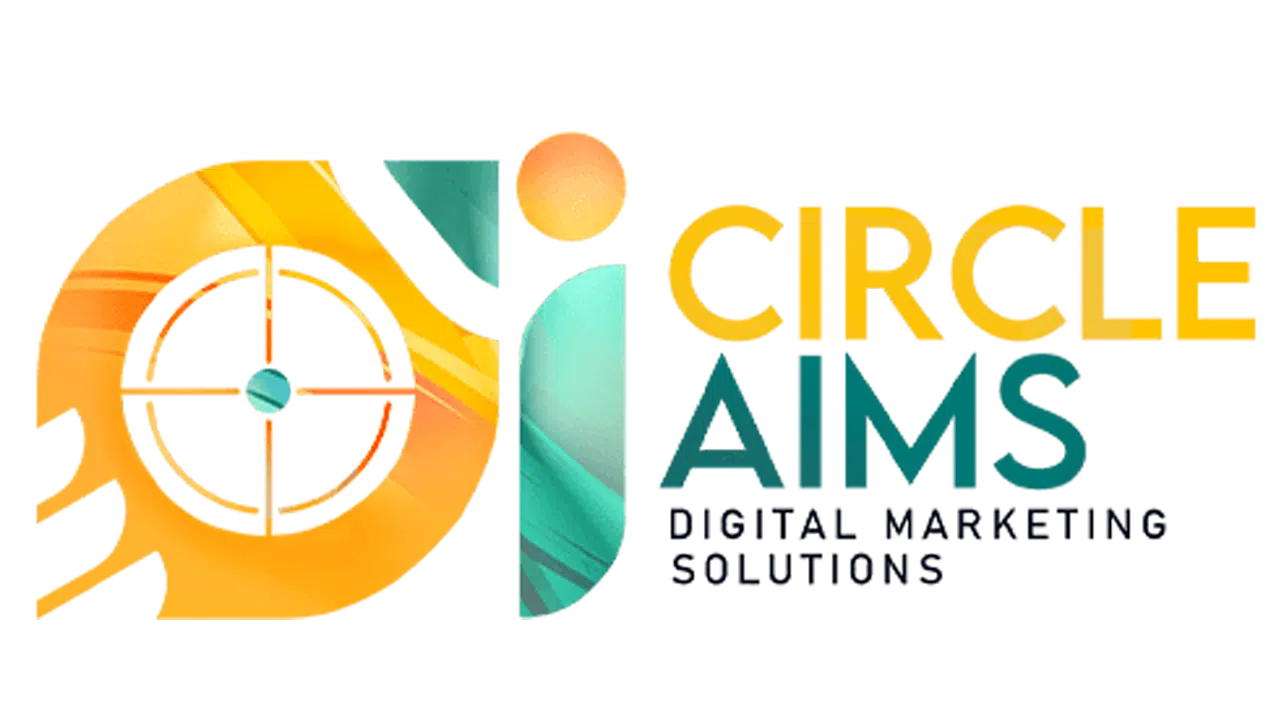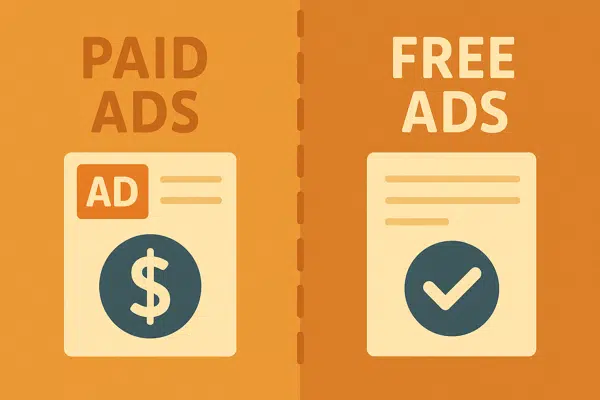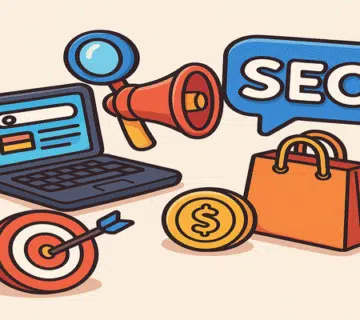The Difference Between Paid and Free Advertising
Introduction to Advertising
Advertising is defined as the process of promoting products or services through various means to attract the attention of a targeted audience. It is a primary tool in the world of marketing, playing a vital role in increasing brand awareness and boosting sales. The clarity and visual appeal of an advertisement are crucial in attracting audiences, as ads should be easy to understand and effectively target the intended demographic.
Advertisements can take many forms, including television ads, online ads, banners, magazines, and newspapers. Each type tends to appeal to a specific segment of the audience, increasing the chances of achieving the goals of the advertising campaign. For example, digital advertising is widely used today due to the spread of the internet and smartphones, making it a powerful tool to reach people anytime, anywhere.

The importance of advertising extends beyond simply promoting products or services; it also helps shape the brand’s image in the minds of consumers. This contributes to building a relationship between the brand and its audience, enhancing loyalty and recognition. As a result, advertising is considered an essential element in modern marketing strategies, significantly influencing purchasing decisions and consumer behavior.
In conclusion, a solid understanding of advertising and its role in marketing is crucial for distinguishing between paid and free advertising methods.
Definition of Paid Advertising
Paid advertising is a form of product or service promotion in which companies pay fees for ad space or exposure on specific channels. Advertising budgets are allocated to purchase space on platforms such as online networks, television, or print to boost brand awareness or sales. This type of advertising is effective for generating quick results, with measurable impact seen shortly after launching a campaign.
Common types of paid advertising include web ads, which target users based on their interests and online behavior. Platforms like Google Ads are used to display advertisements in search results, increasing product visibility when users search specific keywords. This targeted approach allows advertisers to efficiently reach their ideal audience.
In addition to web ads, there are also television ads, where advertisers can purchase airtime during programs or movies. Television advertising is a powerful method for reaching a large audience, especially during peak viewing times. These ads may range from short, impactful messages to complex promotional storytelling.
Lastly, social media ads have become extremely popular in recent years. These ads allow advertisers to create engaging content that boosts user interaction and increases conversion rates. In short, paid advertising is a strategic tool that helps brands stand out in a competitive market.
Definition of Free Advertising
Free advertising refers to a set of marketing activities aimed at promoting a brand or product without incurring direct financial costs. This form of advertising relies on strategically utilizing available resources to attract attention and increase brand awareness. It is particularly beneficial for startups and businesses looking to expand their presence without straining their budgets.
Social media is one of the most effective channels for free advertising. Platforms like Facebook, Twitter, and Instagram allow businesses to engage with their target audience through interactive and appealing content. Sharing posts, photos, and videos can promote brand awareness without significant expenses.
Blog articles are also a powerful tool in free advertising. By creating valuable content offering information or tips relevant to the industry, companies can attract and engage visitors. Optimized content for search engines increases a site’s visibility, helping reach new audiences.
Additionally, collaborating with influencers can extend the reach of free advertising. Brands can partner with influencers whose followers trust their recommendations, enhancing credibility and exposure. Through such diverse strategies, businesses can strengthen their presence without paid advertisements.
Advantages of Paid Advertising
Paid advertising is an effective strategy to increase brand awareness and sales. One of its biggest advantages is the ability to reach a wide audience quickly. Digital platforms enable paid ads to reach millions of users in a short time. For example, launching a campaign on social media allows companies to target users based on interests, locations, and demographics.
Paid ads also allow precise audience targeting. Using advanced analytics tools, advertisers can define specific audience segments to ensure their messages reach those most likely to engage. For instance, a cosmetics brand can target women in a specific age group with relevant interests.
Another benefit is budget flexibility. Advertisers can set budgets according to their needs and goals. With pay-per-click (PPC) models, companies only pay when users engage, offering more financial control.
Lastly, paid advertising delivers fast results, making it ideal for businesses seeking immediate returns. Unlike free ads that take time to build reach and impact, paid ads can generate quick outcomes and help measure ROI swiftly.
Advantages of Free Advertising
Free advertising is a highly beneficial strategy, especially for small and medium-sized businesses. Its primary advantage is cost-efficiency—companies can reach large audiences without high spending. This cost saving allows resources to be redirected toward product development or customer service improvements.
Free advertising also builds trust and credibility. By sharing valuable and informative content, companies position themselves as industry experts, encouraging consumer trust. This trust enhances customer loyalty and purchase frequency. Additionally, free ads improve audience engagement by enabling open communication and feedback exchange.
Long-term strategies like content creation on social media or blogs continue to attract visitors well beyond their publication dates. Businesses can also benefit from reviews and testimonials, which serve as social proof for potential customers. These strategies help deliver value without relying on financial incentives or paid campaigns.
Disadvantages of Paid Advertising
Despite its benefits, paid advertising has drawbacks. One of the most notable is its high cost. Successful campaigns may require substantial budgets, which not all businesses can afford, especially small ones. High expenses can also limit other essential activities.
Another issue is heavy reliance on available budgets. Paid ads often depend on a fixed budget, and once depleted, campaigns can stop abruptly—negatively affecting brand visibility and potential lead generation.
Moreover, there’s pressure to deliver results quickly. Paid campaigns require constant monitoring, which can create stress for marketing teams. Under pressure, hasty decisions may derail strategy. Additionally, high spending does not always guarantee results, making success dependent on many variables.
Disadvantages of Free Advertising
While free advertising is commonly used by smaller businesses, it also comes with challenges. The most significant is the time required to build a following. Developing a loyal audience demands long-term effort and consistency, often taking months or years.
It is also difficult to measure effectiveness accurately. Unlike paid ads with clear metrics like click-through rates, free ads require more complex tracking to assess success. It can be hard to determine whether efforts are contributing to sales or brand awareness.
Lastly, intense competition makes it harder to stand out. With many businesses using free advertising methods, messages can be lost in the crowd. This competition can weaken the impact of marketing efforts and demands a well-thought-out strategy.
How to Choose Between Paid and Free Advertising
When deciding between paid and free advertising, several factors must be considered to make a smart investment decision. First is the available budget. Paid ads require financial commitment, while free options suit companies with limited spending.
Second, define the campaign goal. For quick, visible results, paid ads are better. But if the goal is long-term brand building, free strategies like social media or SEO may be more appropriate.
Third, consider the target audience. Different strategies work depending on where your audience is and how they can be reached. Paid ads offer precise targeting, increasing conversions, while free ads may take longer but foster deeper relationships.
Time is also a key factor. If quick results are needed, paid advertising is ideal. If time allows, free ads may suffice. Ultimately, the best choice depends on a mix of goals, budget, and audience insights.
In conclusion, this article highlights the key differences between paid and free advertising. Paid advertising gives companies greater control and faster results, while free advertising helps build natural audience relationships at lower costs.
Each approach has its pros and cons, and businesses must consider their marketing goals, available budget, and target audience when planning campaigns. Understanding these differences empowers businesses to make informed decisions and enhance their marketing performance.
Both types of advertising have value in a competitive market. Paid ads are ideal for short-term goals or launching new products, while free ads are better for long-term relationship building. A balanced approach can create more effective strategies and help brands thrive in dynamic environments.



[…] strategies like PPC advertising, SEO, and lead magnets, businesses attract qualified leads and move them efficiently through the […]